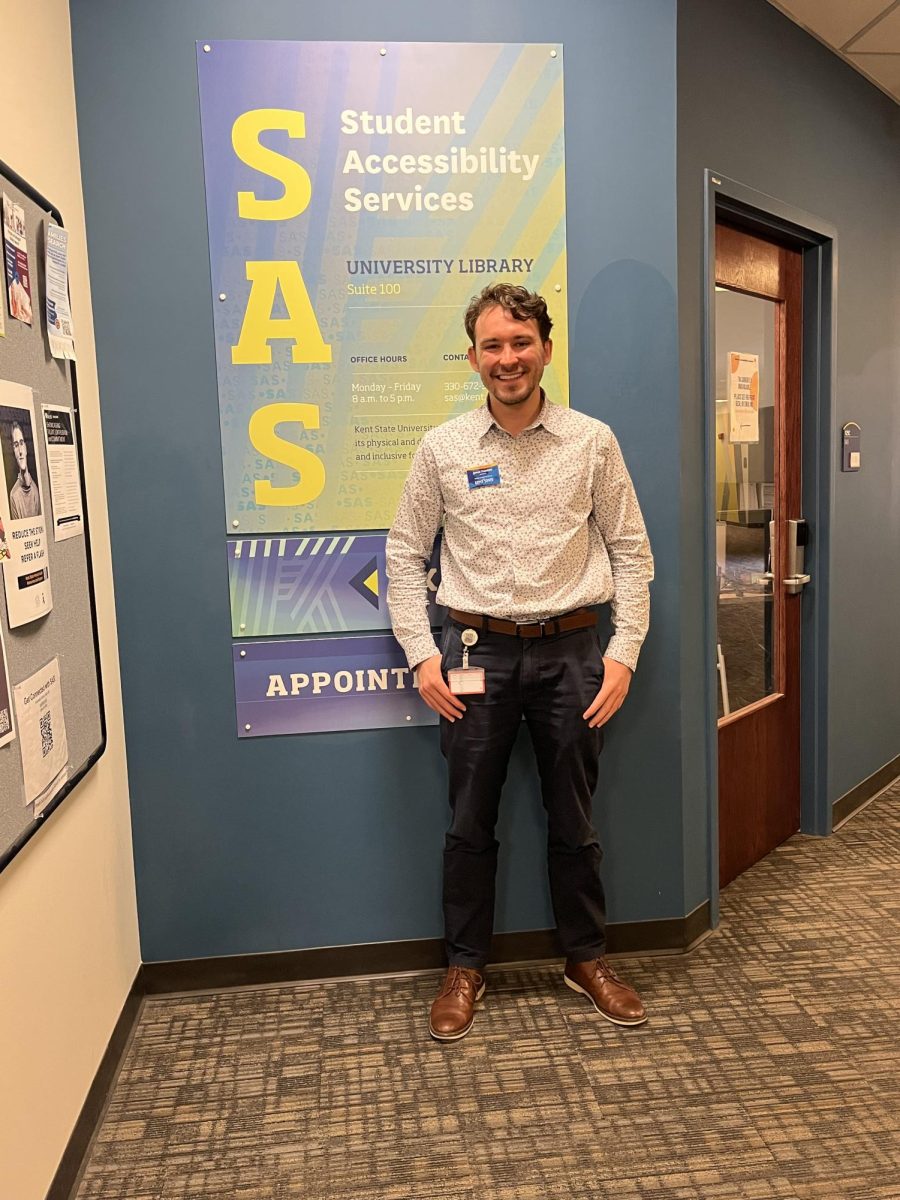Spanning 953 acres, Kent State’s campus poses daily accessibility challenges for students with disabilities.
Student Accessibility Services works with students who may need academic help, transportation services or any other necessary accommodations. Kent State works with PARTA to help navigate these transportation services.
“PARTA SATS is a door-to-door service for students if they have trouble getting to a specific bus stop or something in the environment is making it difficult,” James Trombka, an access advisor for Student Accessibility Services at Kent State, said.
Through SAS, students can use PARTA SATS to schedule rides on the phone or online.
“We have a representative at PARTA that is a coordinator that is specifically for Kent State, so we will work with them to make sure that we are first getting the information we need from students,” Trombka said.
Throughout campus, the school provides bus services for all to ensure everyone can effectively get around, including those who might need extra help.
“We have PARTA bus systems for students to use that’s free and goes all throughout campus,” Trombka said.
Many students utilize PARTA SATS, such as third year journalism major, Abby Kinney.
“I use PARTA because I have a visual impairment, and when I was first planning on coming to Kent State, I was worried how I could navigate through campus,” Kinney said. “PARTA was nice when there was bad weather, especially during the winter. When using PARTA, I didn’t have to worry about anything.”
In short, Trombka said he wants students to know about their office and reach out if they need help.
“A disability is not a person, it’s the barriers in the environment and we need to find those barriers with accommodations and accessibility, then remove them,” Trombka said. “The problem is never the person; it is the environment we are in.”
The university works not only with PARTA, but also faculty to ensure safety for students with disabilities.
“We also do priority snow removal,” Trombka said. “We work with facility folks on campus to make sure that there are priority routes.”
These are accessible and available at any point that students may need it.
“For any student that doesn’t have a disability, it’s so easy to not even think there are obstacles that exist in the real world,” Kinney said. “Writing about it and bringing attention is important to students who do not have disabilities. It brings a light to the situation that people think are typical but can be scary.”
Alayna Howell is a reporter. Contact her at [email protected].


